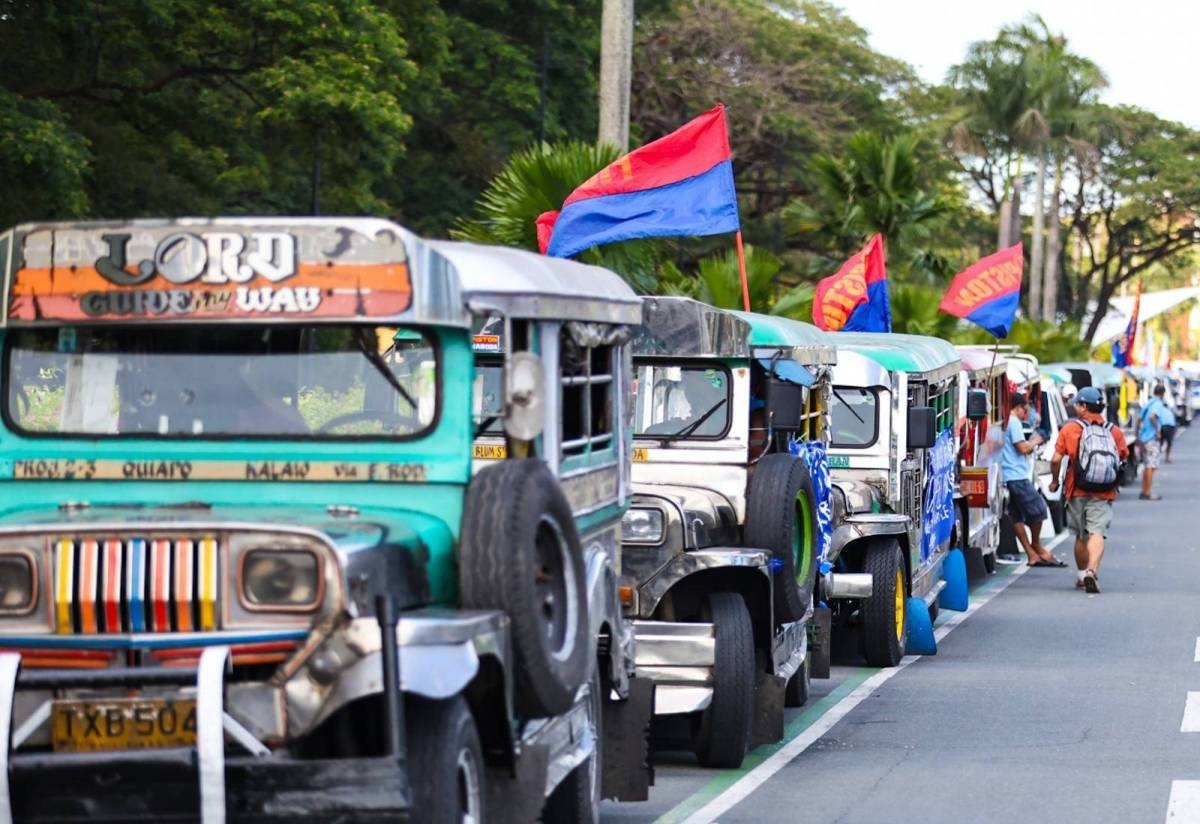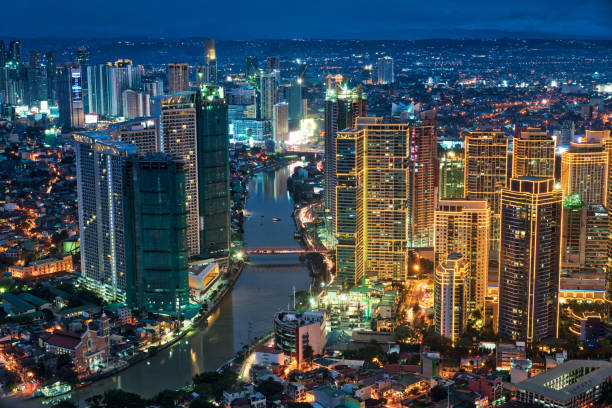The transport strike organized by Manibela and Piston was aimed at protesting against the government’s plan to phase out old jeepneys and replace them with modernized vehicles. The transport groups argue that this move would lead to the displacement of thousands of jeepney drivers and operators who rely on these traditional vehicles for their livelihood.
Despite the strike, the government remained firm in its decision to modernize the public transportation system in Metro Manila. The Department of Transportation (DOTr) emphasized that the modernization program is necessary to improve the quality of public transportation, reduce air pollution, and ensure the safety of commuters.
In response to the strike, the government took several measures to mitigate its impact on the public. Aside from positioning rescue buses in key areas, the LTFRB also coordinated with other transport operators to augment the available vehicles. This collaborative effort aimed to ensure that commuters would still have access to transportation options despite the strike.
Throughout the day, government authorities closely monitored the situation on the ground. Traffic enforcers were deployed to manage the flow of vehicles and prevent any potential disruptions. The police were also on standby to address any security concerns that may arise during the strike.
Despite the government’s efforts, the transport strike did cause some inconveniences for commuters. Some routes experienced reduced frequency of jeepney trips, leading to longer waiting times for passengers. However, overall, the impact of the strike on the city’s transportation system was manageable.
As the first day of the transport strike came to an end, both the government and the transport groups remained steadfast in their positions. The government maintained that the modernization program is necessary for the long-term development of the transportation sector, while the transport groups vowed to continue their fight against what they perceive as a threat to their livelihood.
With the second day of the transport strike looming, the city of Metro Manila braced itself for another day of potential disruptions. The government assured the public that it would continue to implement measures to minimize the impact of the strike and ensure the safety and convenience of commuters. Meanwhile, the transport groups remained determined to make their voices heard and push for their demands to be met.
As the transport strike continued, the city found itself at a crossroads. The clash between the government’s modernization plans and the concerns of the transport groups highlighted the challenges of balancing progress and the welfare of the people. It remains to be seen how this conflict will be resolved and what the future holds for the transportation sector in Metro Manila.
No Disruption in Public Transport
The Metropolitan Manila Development Authority (MMDA) also confirmed that there were no disruptions in public transportation following the strike initiated by Manibela and Piston. The MMDA Chairman, Romando Artes, stated in a media briefing that none of their 400 standby vehicles had been deployed.
Manibela and Piston organized the two-day nationwide strike to protest the government’s Public Utility Vehicle Modernization Program (PUVMP). The program aims to consolidate jeepney drivers and operators into cooperatives or corporations, a move that the transport groups oppose. In their petition filed before the Supreme Court, Piston argued that the administrative orders issued by the Department of Transportation and LTFRB were “oppressive, overreaching, and confiscatory,” violating their rights.
Despite the strike, the LTFRB and MMDA reported no stranded commuters during the morning rush hours. However, as a precautionary measure, rescue buses remained on standby in case any commuters faced difficulties during the strike. Guadiz highlighted that there were concerns about potential intimidation of working public utility vehicle (PUV) drivers by those who opposed the government’s program. Additionally, the strikers had gathered for a demonstration at the University of the Philippines (UP) Diliman and threatened to disrupt PUV services during the evening rush hour.
To ensure the safety and smooth flow of traffic, the MMDA had deployed additional traffic enforcers at key intersections and major thoroughfares. They were tasked with monitoring the situation closely and taking necessary actions to prevent any disruption in public transport. The MMDA also coordinated with the Philippine National Police (PNP) to ensure that law and order were maintained during the strike.
In response to the strike, the government reiterated its commitment to the PUVMP, emphasizing the need for modernization to provide safer and more efficient public transportation services. They argued that the program would not only benefit the commuters but also the drivers and operators themselves, as it would lead to improved working conditions and increased income opportunities.
Meanwhile, the transport groups vowed to continue their protest until their demands were met. They argued that the government’s program favored big corporations and would lead to the displacement of thousands of jeepney drivers and operators. They called for a dialogue with the authorities to find a more inclusive and sustainable solution to the challenges faced by the public transportation sector.
As the day progressed, the strike gained momentum, with more participants joining the demonstration at UP Diliman. The atmosphere was tense, as both sides stood firm on their positions. The strikers chanted slogans, held placards, and blocked some roads, causing minor disruptions in certain areas. However, the authorities managed to maintain order and ensure the safety of the public.
As the evening rush hour approached, the MMDA and LTFRB closely monitored the situation and prepared contingency plans to minimize any inconvenience to the commuters. They urged the public to remain calm and patient, assuring them that measures were in place to address any disruptions that might arise.
In the end, despite the threats and demonstrations, the evening rush hour proceeded relatively smoothly. The authorities’ proactive approach, coupled with the cooperation of the majority of the public, helped avert any major disruptions in public transport. The strike served as a reminder of the ongoing challenges faced by the transportation sector and the need for a comprehensive and inclusive dialogue to find sustainable solutions. The success of the transport strike can be attributed to the effective communication and coordination between the government, PUV operators, and various stakeholders. Prior to the strike, the Land Transportation Franchising and Regulatory Board (LTFRB) held several meetings with PUV operators to discuss the consolidation process and address any concerns they may have had.
During these meetings, the LTFRB emphasized the importance of complying with the April 30 deadline and explained the consequences of non-compliance. They also provided assistance to PUV operators in navigating the consolidation process, such as helping them secure the necessary documents and guiding them through the online application system.
In addition to the efforts of the government, various PUV operators’ associations also played a crucial role in ensuring the success of the strike. These associations organized information campaigns and workshops to educate their members about the consolidation process and the benefits it would bring. They also provided support to operators who were facing difficulties in meeting the deadline, such as offering legal assistance and helping them find potential partners for consolidation.
The smooth implementation of the transport strike can also be attributed to the cooperation of commuters. Many commuters were aware of the strike and made alternative arrangements for their transportation needs. Some opted to carpool with colleagues or friends, while others used ride-hailing services or took advantage of the increased frequency of buses and trains during the strike.
The absence of untoward incidents during the strike is a testament to the effectiveness of the government’s transport modernization program. By consolidating franchises, the government aims to streamline the public transportation system, reduce traffic congestion, and improve the overall commuting experience for Filipinos. This consolidation will also pave the way for the introduction of modern, eco-friendly PUVs that are equipped with the latest safety features.
Moving forward, it is crucial for PUV operators to continue complying with the government’s directives and deadlines. The transport modernization program is a long-term solution to the transportation challenges faced by Metro Manila, and its success relies on the commitment and cooperation of all stakeholders. The government, for its part, should continue providing support and assistance to PUV operators to ensure a smooth transition to the new system. With everyone working together, Metro Manila can look forward to a more efficient and sustainable public transportation system in the years to come.







